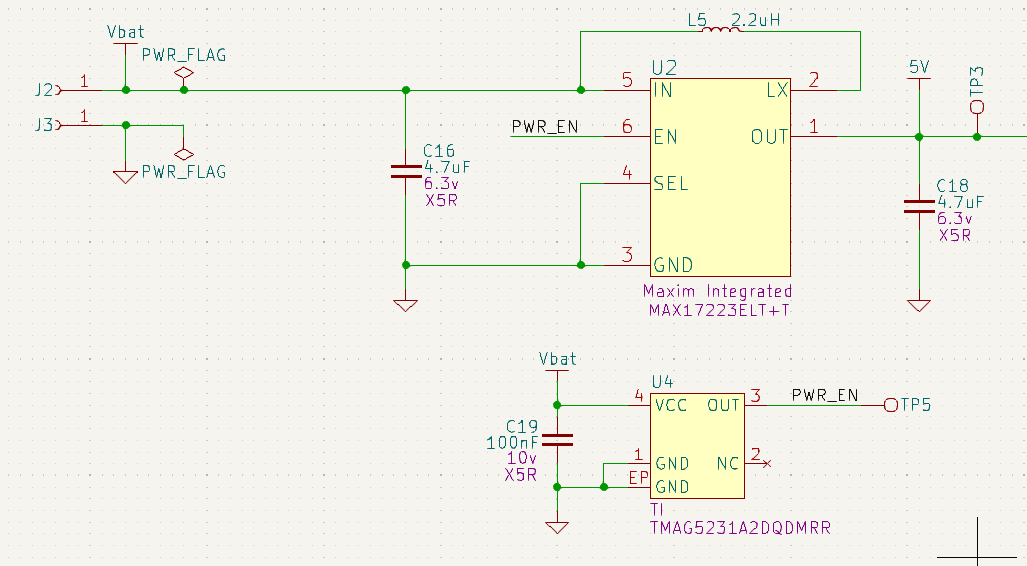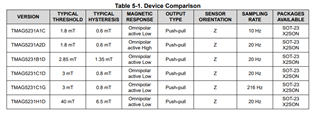Hello,
I am using TMAG5231A2DQDMRR put a device in a low power state. Maybe I'm misreading the datasheet, but it seems that I'm getting the inverse operation I'm expecting.
The output of the TMAG5231 goes in to the enable pin of a MAX17223 (which is active high and works with a push/pull output), as shown in the schematic snapshot below:

My expectation is that the TMAG5231 outputs a high signal when there is minimal magnetic field (flux density below Brp) and outputs a low signal when there is a magnetic field (flux density about Bop).
However, what happens is that it outputs a low when there is no magnet nearby, and when I put a magnet near the IC it outputs a high. The opposite of what I want/am expecting.
For what it's worth, VBat is a 3V CR battery cell.
Am I misreading something?
Thank you!


